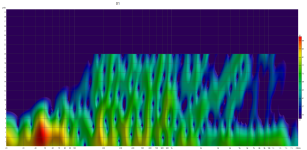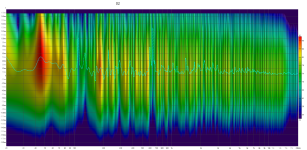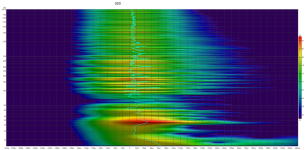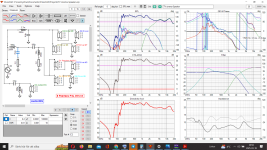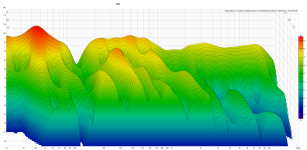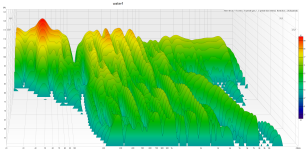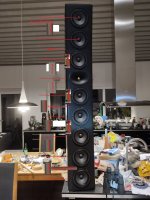a big Krell amp
How big? How loud do you play? How well does it recover from clipping?
dave
Can you do anything about combing?
Combing is eliminates completely if the spacing between 2 drivers playing the same frequency are a quarter wavelength centre-to-centre. As distance increases combing gets worse. Given the spacing you have XO would need to be very low and th etweeter likely can’t go near low enuff.
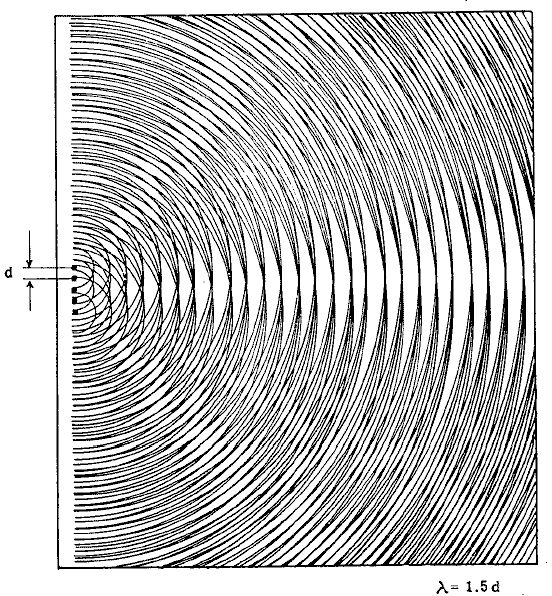
Toole'’s work suggests it is not near as audiable as they look. From Taylor: http://p10hifi.net/planet10/TLS/downloads/taylor-line-array.pdf
dave
Krell has 2 x 440 w/8 ohm class aHow big? How loud do you play? How well does it recover from clipping?
I play ca 105-110 dB peak maby 118 dB
Krell has 2 x 440 w/8 ohm class a
What model? That much Class A power it would need to be the size of small fridge.
This is a 300 watt 8Ω mono Pass (https://www.passlabs.com/products/xs300/):
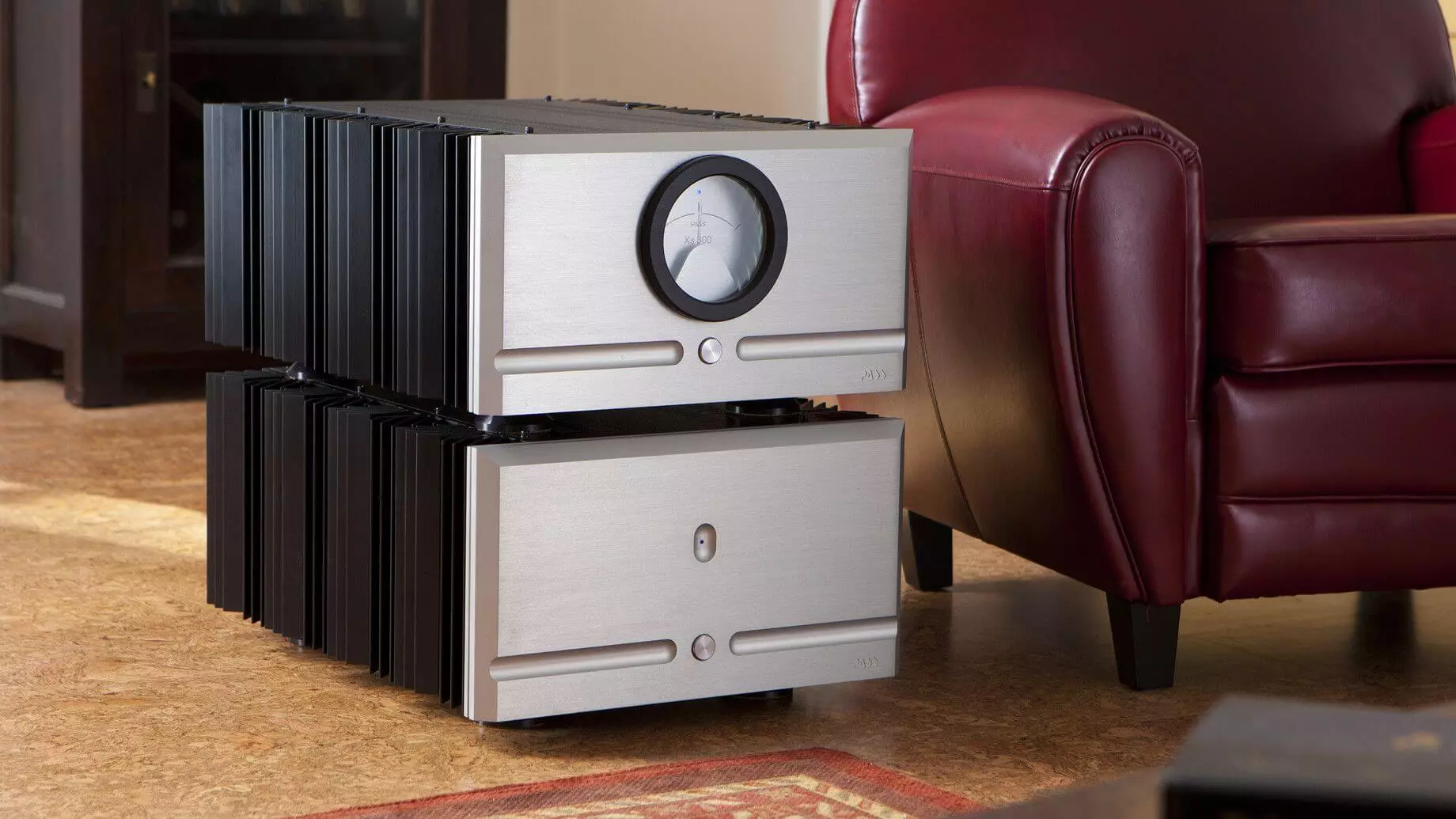
What does the impedance of the loudspeaker look like?
dave
Krell F.B.IWhat model?
https://www.stereophile.com/integratedamps/707krell/index.html
Have parallel 4 drivers 8 + 8 ohm and 8 + 8 ohm then in serie to xover.What does the impedance of the loudspeaker look like?
Vituaxcad says 5-20 ohm but havent measured hole speaker only separate drivers.
The impedance curve, not the nominal values. I am looking at the phase as well as the magnitude.
KrellFBI: factory number "It weighs 104 lbs, and puts out 300Wpc (600Wpc into 4 ohms, 1200Wpc into 2 ohms)”[/i]
Measurements: [i]"plotting the output power against the THD+N percentage (fig.3) shows that the FBI actually delivered 430Wpc into 8 ohms at 1% THD, which is a significant 1.6dBW higher. With both channels driven, the amplifier clipped at 667W into 4 ohms (25.2dBW).”[/i]
The size, low weight, and that it got too hot to touch after the third power test, suggests it may well have an undersized PSU.
Anyone try this amp with ESLs?
400 w is 6 dB more power than 100 w, a difference easily swamped if the more powerful amp does not clip as gracefully. The actual number into a fixed, non-reactive load is only of so much importance. I have had instances where a 20 watt amp played louder before audiable clipping than a 200 w amplifier, and that intoa pretty resistive amplifier. Into reactive loads Iie ESLs) i have heard 60 w outdo 400 w.
The 400 w number is impressive but far from the whole story. That much power in such a small package will have to make compromises. If the load gets complex it could be current starved.
dave
KrellFBI: factory number "It weighs 104 lbs, and puts out 300Wpc (600Wpc into 4 ohms, 1200Wpc into 2 ohms)”[/i]
Measurements: [i]"plotting the output power against the THD+N percentage (fig.3) shows that the FBI actually delivered 430Wpc into 8 ohms at 1% THD, which is a significant 1.6dBW higher. With both channels driven, the amplifier clipped at 667W into 4 ohms (25.2dBW).”[/i]
The size, low weight, and that it got too hot to touch after the third power test, suggests it may well have an undersized PSU.
Anyone try this amp with ESLs?
400 w is 6 dB more power than 100 w, a difference easily swamped if the more powerful amp does not clip as gracefully. The actual number into a fixed, non-reactive load is only of so much importance. I have had instances where a 20 watt amp played louder before audiable clipping than a 200 w amplifier, and that intoa pretty resistive amplifier. Into reactive loads Iie ESLs) i have heard 60 w outdo 400 w.
The 400 w number is impressive but far from the whole story. That much power in such a small package will have to make compromises. If the load gets complex it could be current starved.
dave
One more, but could not find "valled burst spectrum"
This one is from REW:
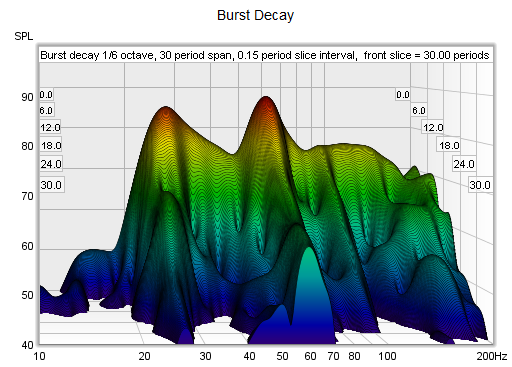
A room, not a speaker — if it was a speaker it would be real bad.
The expected 80 Hz peak that comes from an 8’ ceiling, the lower one, one of the lateral dimensions.
dave
Except for the big issue at about 80-160 hz, the upper bass (low magnitude, high phase angle. It will be acting much a 2Ω speaker in this vicinity.
The waterfall is not very good with a whole unch of ringing. 5ignificant ones in the midrange, the one that ends at about 3k could be a diffraction artifact. They are all about the same Q.
dave
Burst decay graph at approx 100 dBs. There does appear to be a lot going on.
Not familiar with REW or ARTA kindly could you explain, from the attached graph I can see in the header span period 30 , 0.30 slice interval and some other figures of 4.5, 6.0 and 7.5 are these mS of time ?
Not familiar with REW or ARTA kindly could you explain, from the attached graph I can see in the header span period 30 , 0.30 slice interval and some other figures of 4.5, 6.0 and 7.5 are these mS of time ?
without having read through the whole thread and going by the picture alone i would suspect the problem may be due to the arraying of the drivers.
you should have fairly horrendous comb filtering there based on driver spacing and crossover frequency.
the way to salvage this system would be to turn it into a 3-way by replacing one of the woofers with a midrange.
midrange crossover frequency should be such that the woofer spacing equals 1/2 wavelength.
assuming the spacing is about 8 inches you would have to cross below 800 hz which any midrange can do.
you can also use a bucket midrange like this:
https://www.bcspeakers.com/en/products/lf-driver/6.5/8/6NSM51
this way you don't need to build a chamber for it.
you should have fairly horrendous comb filtering there based on driver spacing and crossover frequency.
the way to salvage this system would be to turn it into a 3-way by replacing one of the woofers with a midrange.
midrange crossover frequency should be such that the woofer spacing equals 1/2 wavelength.
assuming the spacing is about 8 inches you would have to cross below 800 hz which any midrange can do.
you can also use a bucket midrange like this:
https://www.bcspeakers.com/en/products/lf-driver/6.5/8/6NSM51
this way you don't need to build a chamber for it.
This is a skiss on driver placement.without having read through the whole thread and going by the picture alone i would suspect the problem may be due to the arraying of the drivers.
you should have fairly horrendous comb filtering there based on driver spacing and crossover frequency.
From the beginning i had plans to mount the drivers from behind, and make small waveguides to all drivers in the MDF.
But change that to standard after cutting the holes in the baffle.
Attachments
- Home
- Loudspeakers
- Multi-Way
- Drivers undertones
